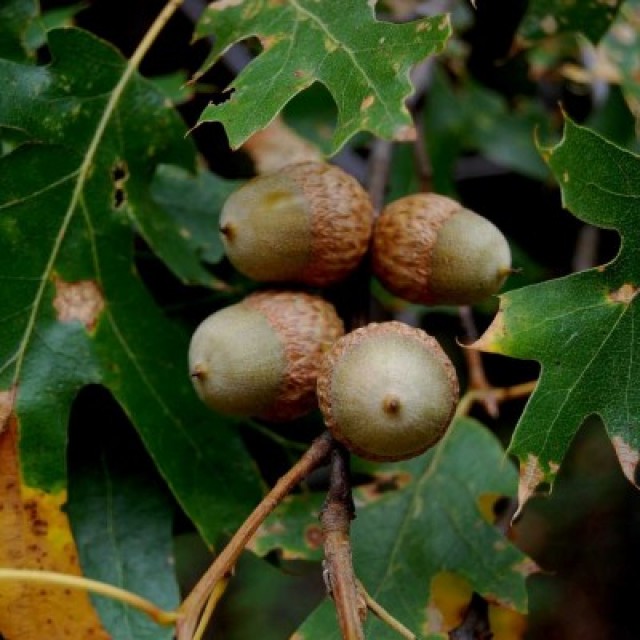COMMON NAME
California black oak
SCIENTIFIC NAME
Quercus kelloggii
ALSO KNOWN AS
Black oak, Kellogg oak
Plant family
Beech (Fagaceae)
Plant group
Deciduous Trees and Shrubs
California black oak is a deciduous, hardwood tree with a broad rounded crown. It is the largest mountain oak in the West. The trunk bark is dark and covered with small plates. The bright green leaves are distinctly six-lobed ending in one to four bristle-tipped teeth. The acorns mature in the second year. The nut is deeply set in the cup and the cup is covered with thin, flat and imbricate scales. Source: USDA Plants Database
79 reports
28+
OBSERVERS
79+
OBSERVATIONS
Identification hints
Black Oaks can grow to heights of 50-110 feet when mature, but are typically 30-80 feet. In close stands, they develop narrow thin crowns while trees grown in the open develop broad crowns with multiple stems that fork repeatedly. The grey bark is thin and smooth in young trees, becoming thick, ridged, and plate-like with age. The dark leaves are deeply lobed and can grow 4-8 inches long. Male flowers are greenish red, 1.5-3 inches long, and have bright red anthers and pale green filaments. Female flowers have dark red stigmas. Seeds are acorns with a light brown thin scaled cap that mature the second summer after pollination. Acorns may form singly or in clusters of up six, varying widely in size.
Did you know?
California black oaks are the most abundant oak on the West Coast. They are intolerant of shade and their population is declining due to fire suppression. They can regenerate through acorn germination and by sprouts that emerge after the parent tree is cut or burned. Acorns constitute an average of 50% of the fall and winter diets of western gray squirrel and black-tailed deer. Fawn survival rates increase or decrease with the size of the acorn crop.
DISTRIBUTION IN TH U.S.
There is no information available about this species.
HABITAT
There is no information available about this species.
See Menu
- 2021 Chicago Botanic Garden. All Rights Reserved.
-
Creative Commons
BY-NC-SA 4.0 - Terms of Use
- Privacy Policy
- Data Sharing and Citation Policies
- 2021 Chicago Botanic Garden. All Rights Reserved.



